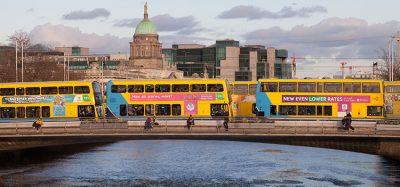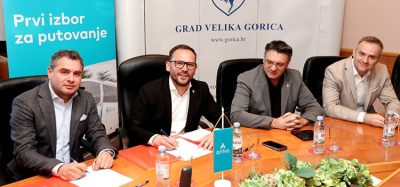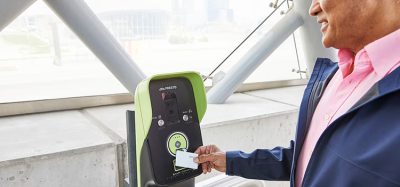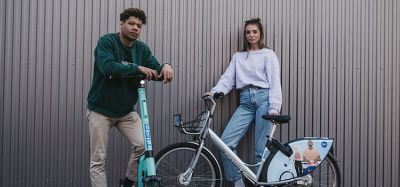Defining the route to innovation through partnership
- Like
- Digg
- Del
- Tumblr
- VKontakte
- Buffer
- Love This
- Odnoklassniki
- Meneame
- Blogger
- Amazon
- Yahoo Mail
- Gmail
- AOL
- Newsvine
- HackerNews
- Evernote
- MySpace
- Mail.ru
- Viadeo
- Line
- Comments
- Yummly
- SMS
- Viber
- Telegram
- Subscribe
- Skype
- Facebook Messenger
- Kakao
- LiveJournal
- Yammer
- Edgar
- Fintel
- Mix
- Instapaper
- Copy Link
Posted: 8 June 2020 | Paul DesRocher - RTD, Tonya Anderson - RTD | No comments yet
Tonya Anderson and Paul DesRocher from RTD Denver detail the steps the agency has taken to modernise the ways in which riders access services, including how a collaboration with Uber has given customers more ways than ever to plan and pay for trips.
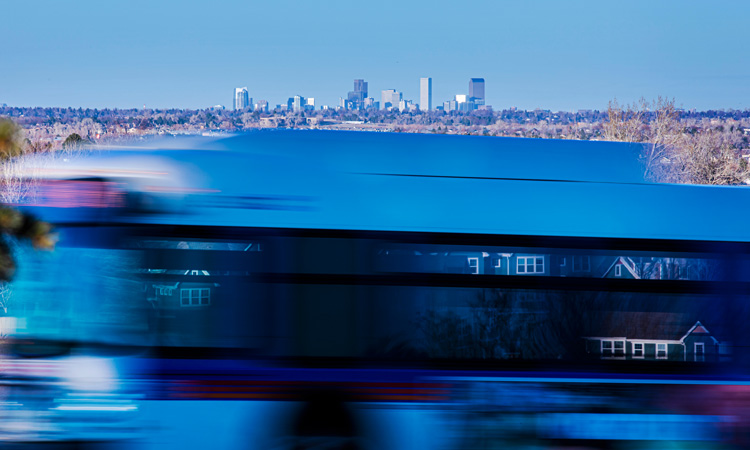

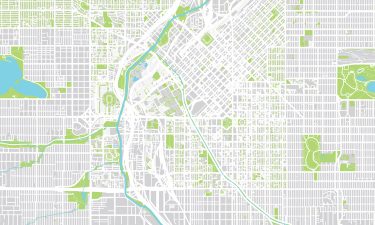

The Uber collaboration required a phased approach. They needed to pull real-time transit information and bus scheduling information into their app, so they had to basically design new screens in-app to facilitate that. A few months after the launch of the in-app transit information and journey planning, they integrated ticket purchasing with the Masabi mobile ticketing platform. Since then, RTD has also integrated with the very popular Transit app, too.
What kind of projects and initiatives is Denver working on to update mass transit for the MaaS age?
Paul DesRocher: The first and foremost project that RTD is leading at the moment is our ‘Reimagine RTD’ planning process. It’s a process that has been initiated similarly in different transit districts throughout the United States. It typically engages districts on the question of how they want to apply their services, either through concentrating services at will, creating the highest possible ridership, or spreading those services throughout the district to primarily achieve a geographic fairness. Transit agencies in the United States are funded mostly through a sales tax that’s paid by district constituents, so there is an expectation that if you’re paying that tax, you will receive services in return.
Uber and Lyft have adjusted their business models because they now see transit collaborations as being beneficial to their bottom line
When it comes to ridership and serving those people, RTD’s most efficient routes tend to be concentrated within our urban area, but the district we serve is quite a bit bigger than just Denver; we actually have 40 municipalities that make up our district. A big proportion of that area is quite suburban and even rural. Even though the people in those areas are paying into our tax district, their land use and urban makeup isn’t always accommodating to transit. We’re roughly six months into this planning process, and it usually takes two years. We’re sifting through a lot of feedback but remain very much focused on getting buy-in from representatives of the municipalities through the district.


The Uber collaboration required a phased approach. They needed to pull real-time transit information and bus scheduling information into their app, so they had to basically design new screens in-app to facilitate that. A few months after the launch of the in-app transit information and journey planning, they integrated ticket purchasing with the Masabi mobile ticketing platform. Since then, RTD has also integrated with the very popular Transit app, too.
What was the internal reaction like at RTD when you were approached by Uber?
Tonya Anderson: There was some apprehension at first – nobody quite knew what the experience would be like in working with a company like Uber. There were some people inside the agency who’d had poor experiences with similar partnerships in the past. When Uber met with us, though, they really wanted to hear what we had to say, what our goals are and what we thought about working together. It was clear at that point that their approach would be different. Our collaboration with Uber was a great experience and we look forward to the next amazing opportunity to work together.
Paul DesRocher: I think some of that anxiety comes from the primary difference between the way that MaaS manifested in the U.S. compared to somewhere like Europe. In the U.S., Uber and Lyft have so far dominated the conversation as to how to roll out new mobility options in the market. Some of the trepidation relates to the fact that Uber and Lyft are for-profit companies, both of which have gone public in the last few years.
By collaborating with the private sector, transit agencies try different partnerships, understanding what their core strength and core product is within that
At the back of peoples’ minds was the fear that a relationship like this would be primarily profit‑driven at the expense of public transit. What transit agencies have gradually started to realise, though, is that Uber and Lyft have adjusted their business models because they now see transit collaborations as being beneficial to their bottom line. If they can establish relationships with transit agencies, there’s a potential for additional revenue through the taxation I referred to earlier, which is collected by transit agencies throughout the world.
Some of the leadership changes at these ride-hailing giants have led to a change of thinking; transit is no longer the competition – it’s a significant part of the solution to a common goal to reduce the usage of single-occupancy vehicles.
Part of the reason that this type of collaboration has begun to flourish a little more around the world is because new modes of mobility, from ride‑hailing to e-scooters, help change the conversation about the type of services that a specific place really requires. Public transit is great at moving lots of people at once in a confined space, but that doesn’t necessarily make a lot of sense if your region’s land use doesn’t require that. There’s an understanding developing between transit agencies and mobility providers that collaboration can help them to capitalise on their own unique strengths much better than they can alone.
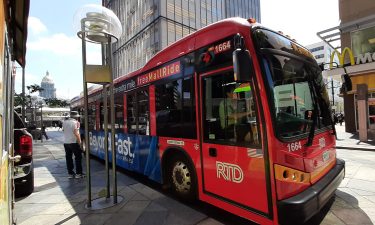

Public transit agencies are government-funded, so there’s a very limited amount of money available to provide our services. If we were tasked with providing everything to everyone, that limited amount of money would need to be diffused in radically different ways. When it comes to private services or businesses, there is a core product, but there’s also willingness and the ability to experiment to a greater degree than public sector organisations can. By collaborating with the private sector, transit agencies try different partnerships, understanding what their core strength and core product is within that, and then apply their limited resources in a much more effective way.
Tonya Anderson: An example of this internally has been our discussions into whether we would want to launch our own Mobility-as-a-Service app, what that would look like and if it would be successful. Naturally, there are opinions on both sides, some that believe public transportation should be driving the MaaS effort, and others that don’t necessarily see the value in competing with already established and successful apps. It’s also dependent on what our agency goals are, so launching our own Mobility-as-a-Service app may not be the best use of our resources. As part of our discussions on the subject, we are part of a Mobility-as-a-Service steering committee that meets monthly. We meet with different vendors and different transit agencies to navigate where others are going in the MaaS space.
Do you think it’s a challenging time to work in public transport in trying to keep up with so much technological change, as well as having to adapt to constantly changing customer needs?
Tonya Anderson: I don’t think so – I actually think it’s a really exciting time to be in this sector. I think that attitude is partly dependent on having leadership at your transit agency that encourages innovation. Public transport can be stifling if you’re unable to think outside the box a little, try something new and accept that even if it doesn’t work, it was worth doing. A lot of technology companies do that now and have adopted a ‘fail fast’ way of thinking. It allows them to pivot if something’s not working and make adjustments, and I think transit agencies have started to do more of that because of partnerships with private entities.
I think some of that anxiety comes from the primary difference between the way that MaaS manifested in the U.S. compared to somewhere like Europe
Paul DesRocher: I would agree with that, and I would underscore the comment related to leadership being supportive of public agencies taking the kinds of risks that are more commonly seen in the private sector.
There will always be roadblocks within any sector you work in. I’ve worked in both the public and private sectors, and there’s just different constraints associated with working in each, but I have always been driven by the idea of working toward the public good.
There are any number of things that are challenging at the same time. A federal government that’s not completely supportive of public transportation in urban areas, and a few other things that can feel politically oppressive. Ultimately, though, those things become background noise when your professional goals align with your personal beliefs.
COVID-19’s impact on MaaS at RTD – Tonya Anderson, Sr. Product Manager, Electronic Fare Operations, RTD
The novel coronavirus has disrupted many industries around the world in ways we haven’t seen in over 100 years, and the public transportation industry is without exception. Although disruption has a negative connotation, there is a silver lining – disruption can bring on renewed perspectives.
The Regional Transportation District experienced an overall 70 per cent reduction in ridership due to the coronavirus pandemic. Mobile ticketing sales plummeted by more than 80 per cent in just three short weeks, while farebox revenue experienced a 63 per cent decline. Essential workers who depend on public transportation are predominantly paying with cash. Cash cannot be replaced if lost or stolen in the way a digital ticket can, which presents a negative experience for cash-paying customers. Finding a suitable, cost‑effective solution to this problem would benefit customers and RTD, as the agency works to win back the trust of our customers in a post-pandemic future.
Biographies




Related topics
Business Models, Mobility Services, Multimodality, Public Transport, Transport Governance & Policy
Issue
Issue 2 2020
Related cities
Denver
Related organisations
Denver’s Regional Transportation District (RTD), Lyft, Uber




